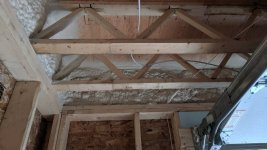gstrom99
Elite Member
- Joined
- Nov 4, 2015
- Messages
- 2,524
- Location
- Greene, Iowa
- Tractor
- Deere 855, Deere 530R zero turn, Allis Chalmers D17 III, Polaris Ranger, Deere 3032E (SIL's), Yamaha Timberwolf 250, Husky saws, H & H 10k and Carry-On trailers
Good advice. I've looked (a little) at the spray foam "systems" both online and at the Green and Orange stores. They all seem kinda pricey to do a full job. I like the idea of putting a coat of an inch or two on the metal walls, then filling the rest up with batts.

